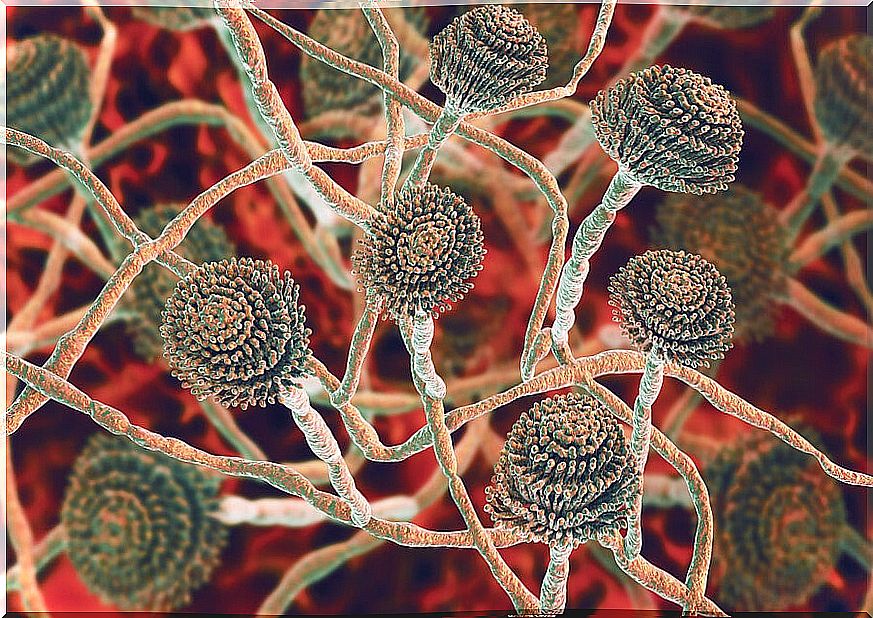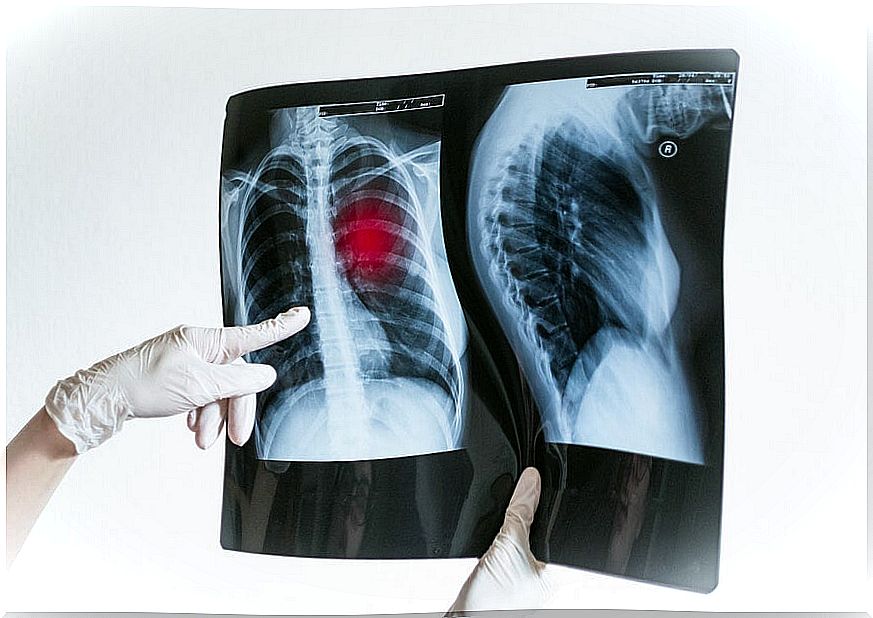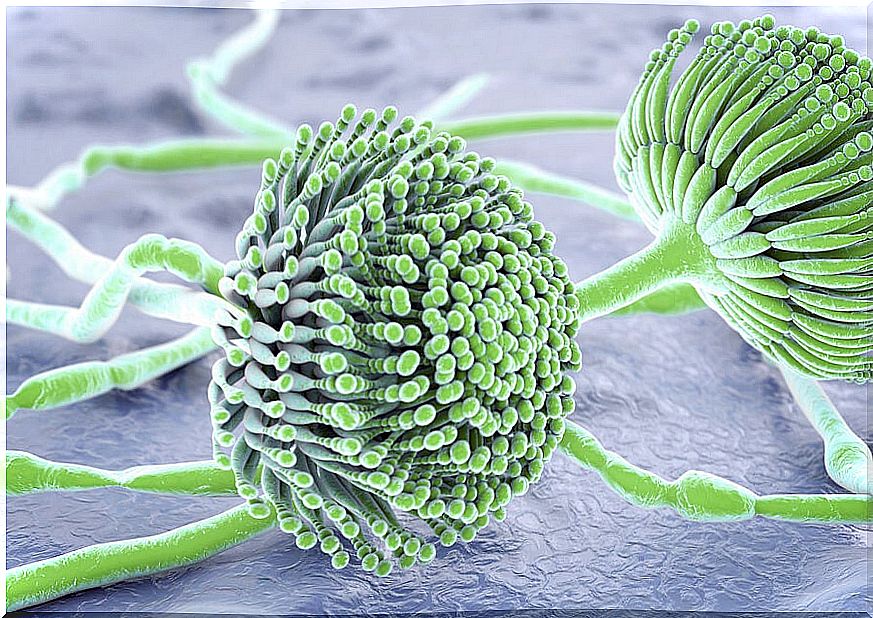Aspergillosis And Fungi In The Lungs
Symptoms such as cough, fever, bloody sputum, general malaise, and weight loss may be indicative of a lung fungal infection, such as aspergillosis. Fungi in the lungs are not common in the general population, but there are risk groups for contracting them, such as immunocompromised people in hospital settings.
Aspergillosis, in fact, is the most common form of fungal infection in the respiratory tract, and according to various medical studies, its mortality rate is estimated to be around 50%.
How to recognize this pathology? Are there measures to avoid it? Due to its high lethality in certain population groups, it is essential to know the answers to these questions in order to adopt preventive habits. Therefore, in this space we tell you everything you need to know about aspergillosis, from the causative agent to its symptoms and treatment.
About the genus Aspergillus
Aspergillus is a genus of fungi that includes around 600 species. This is ubiquitous, that is, it is found in all environments, and therefore the inhalation of its spores without any harm to humans is a very common phenomenon.
This fungus is filamentous in nature, and is made up of chains of cells called hyphae. In addition, it is an opportunistic living being, and therefore it can generate various pathologies in immunocompromised people, such as the following:
- Pulmonary aspergillosis, which we will see next.
- Onychomycosis, a progressive nail disease.
- Otomicosis, infection of the skin of the external auditory canal.
- Allergic sinusitis.
Despite the fact that all these diseases are caused by the fungus in question, we are going to focus on pulmonary aspergillosis, especially due to its high lethality mentioned above.

What Causes Aspergillosis?
In a person with a normal immune system, the hyphae and spores of the fungus are eliminated by macrophages, neutrophils, and other granulocyte-mediated protective mechanisms.
The situation is complicated in patients with treatments that reduce their immunological efficacy or associated pathologies, since there may be cases in which hyphae grow uncontrollably in the respiratory tract.
These fungi can even reach the blood vessels, where they cause the greatest danger. As various studies show, they lead to severe thrombosis with all the consequences that this entails.
Aspergillosis and fungi in the lungs
The term “aspergillosis” refers to any disease caused by the fungus already described. Coinciding with a publication in the National Center for Biotechnology Information , the most common species that produce it are Aspergillus fumigatus, Aspergillus flavus, Aspergillus niger, Aspergillus nidulans and Aspergillus terreus .
There are several types of aspergillosis that can compromise lung health. Likewise, each one has different manifestations and consequences. Let’s see in detail the most common ones.
Allergic bronchopulmonary aspergillosis
Characterized by recurrent episodes of bronchial obstruction in initially asymptomatic patients. Then there is a picture of fever with asthmatic attacks.
Aspergillomas
They are granulomas that contain “balls” formed by the hyphae of the fungus. According to various microbiological studies, they occur in people with previous lung cavities, such as tuberculosis.
In Peru, for example, a statistical analysis showed that a large percentage of people with residual cavitary lesions had aspergillomas. In 50% of the cases they were caused by Aspergillus fumigatus. This variant is characterized by bloody coughs.
Invasive pulmonary aspergillosis
Very severe atypical pneumonia, associated with fever and pleuritic pain. It can be found not only in patients with weakened immune systems, but also in critically ill people with chronic obstructive pulmonary disease (COPD).

There are other variants, such as recurrent chronic invasive pulmonary aspergillosis, invasive tracheobronchitis, acute sinuthysis, and other conditions.
Symptoms
Symptoms depend on the type of infection, but can be reflected in a general clinical picture characterized by the following:
- Dry, bloody cough or mucous plugs.
- Fever.
- General unwillingness and weight loss.
- Wheezing
In addition, if the hyphae reach areas beyond the lungs, the symptoms may extend to other signs such as:
- Blood in the urine and decreased urinary output.
- Chest and bone pain.
- Shaking chills.
- Headaches and vision problems.
It is important to note that, as the book Infectious Diseases and Clinical Microbiology points out , Aspergillus hyphae and spores can spread to the skin, kidneys, liver, eyes, and even the central nervous system. According to the same source, the invasion of the latter leads, in 80% of cases, to certain death.
Detection tools
Aspergillosis detection methods are varied. At first, reaching the diagnosis can be difficult, since the symptoms are similar to those of other lung diseases. Therefore, the doctor may suggest the following:
- Antibody test for aspergillosis in the blood, very useful in the early stages of the disease.
- Chest X-ray, common in the diagnosis of aspergillomas.
- Pulmonary function tests.
- Specific cultures for the fungus where samples of the patient’s sputum are placed.

Treatment
The drugs used will be, as a general rule, antifungals. These include voriconazole, itraconazole, amphotericin B, and caspofungin. The drug of choice is usually voriconazole.
A comparative study determined that this was much more effective than amphotericin B, since at 12 weeks a higher percentage of patients undergoing treatment with it survived (71% vs 58%).
Aspergillosis and fungi in the lungs: what to remember?
Aspergillosis, as we have seen, is a pathology that presents with severe symptoms, depending on the infected sites and the progression of the disease. The prognosis is very reserved, since it occurs in already immunocompromised patients, which complicates things a lot. Unfortunately, there is also no clear way of prevention.
The Centers for Disease Control and Prevention (CDC) recommends immunosuppressed patients avoid places with a lot of dust, wear insulating masks, and sanitize skin and wounds as much as possible to eliminate possible spores.
Another possible prevention method is to carry out periodic blood tests in people in risk groups, since this can identify invasive aspergillosis in its early stages.









